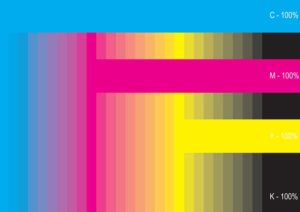With years of experience under our belts, we find that there are a lot of industry-related terms that people only really think they understand. One of the biggest of these is DPI, an acronym short for “dots per inch.” It ultimately refers to the resolution of a finished product, not too different from the resolution of something like a high definition television set in the grand scheme of things.
But even going beyond that, DPI is also a direct contributor to the quality of your finished product. That’s why this is one topic that it’s particularly important to shed as much light on as possible.
The Art of DPI: Breaking It Down
 A lot of laser and multifunction printers state their print resolution as “horizontal dots per inch” by “vertical dots per inch.” As a general rule of thumb, this is one of those situations where larger numbers are always better. Devices with a higher DPI are capable of producing much finer and more detailed lines and, thus, more quality images as a result.
A lot of laser and multifunction printers state their print resolution as “horizontal dots per inch” by “vertical dots per inch.” As a general rule of thumb, this is one of those situations where larger numbers are always better. Devices with a higher DPI are capable of producing much finer and more detailed lines and, thus, more quality images as a result.
If you design a high DPI image but use a low-quality piece of equipment to actually print it, you’re essentially sacrificing a great deal of quality almost instantly. The resolution of the design itself is higher than what the printer is capable of producing. This is a problem, but it’s not the only one you run into when you fail to consider exactly what DPI means and how it will impact what you’re trying to do.
Let’s say you were designing something small like a flyer on your computer and the finished file ultimately had a low resolution of around 80 DPI. That file may look perfectly fine on your computer screen – great, even. But if you were to blow it up to a format that required a higher resolution – even just a modest jump like 250 DPI – you’d suddenly be in a world of trouble.
The first thing you’d notice is that all of the text looked fuzzy and was hard to read -particularly instances of small text. Then, you’d start to notice that any images contained in the file looked blurry and pixelated. You return to your computer and the image looks great. You look at the printed product and it doesn’t. Why?
Because once again, DPI matters a whole lot more than you think.
At Unique Printing & Labels, our digital press is capable of printing every last job at 1200 DPI – meaning that you get the great labels you need without sacrificing the quality you demand. With the same terrific finishing that you’ve come to expect from a flexographic process combined with the ability to print directly from a PDF, all of this goes a long way towards making sure that your materials don’t just look as good as they did in your head – but that they look even better.
If you have any additional questions about why DPI matters, or if you’d just like to find out more information about some of the other products and services that we offer, please fill out the form below and we’ll in touch as soon as possible!
